Why should you worry about increasing customer engagement?
Well, a great customer engagement strategy can be the difference between a long-lasting customer relationship and thousands of dollars lost to customer churn - because engaged customers are profitable customers.
Low customer engagement equals increased customer churn which equals higher acquisition costs. All these lead to a drain in profits.
Today, we'll explore 13 tested strategies for increasing and maintaining customer engagement. Let's get to it.
What is Customer Engagement?
Customer engagement refers to how interested and active customers are with your brand. Monitoring engagement levels allows organizations to improve communication with new and existing customers and build stronger customer relationships.
Customer engagement is an important measure of your customer experience, reflecting how well your business can capture and maintain interest. For example, your marketing team might monitor social media engagement, content downloads, or website traffic to gauge engagement levels. Meanwhile, sales may focus on demo attendance rates or lead response times.
In essence, customer engagement examines how much customers care about your brand. As customer engagement grows, your pool of loyal customers grows with it, increasing brand equity and business growth.
What is a Customer Engagement Strategy?
A customer engagement strategy is a step-by-step marketing plan for creating a customer experience that brings customers back for more products and services. Think of it as an instruction manual for building a loyal fanbase that purchases your products or services and advocates for your brand.
Customer engagement strategies are a common way businesses build lasting relationships with their customers, enhance client satisfaction, and drive brand loyalty. This is done by involving customers in key decisions and creating personalized experiences.
Key Objectives of a Customer Engagement Strategy
A customer engagement strategy strives to create a stand-out customer experience, which is achieved through a focus on four key objectives:
- Improving Customer Satisfaction: Ensuring that every interaction a customer has with your brand is positive and meets or exceeds their expectations.
- Enhancing Customer Loyalty: Creating a bond between the customer and the brand that encourages repeat business and long-term loyalty.
- Increasing Customer Lifetime Value (CLTV): Maximizing the total revenue a business can expect from a single customer over the duration of their relationship.
- Boosting Brand Advocacy: Turning satisfied customers into promoters who will recommend your brand to others.
Benefits of a Customer Engagement Strategy
With a strategic approach applied to customer engagement, your organization can benefit in many ways. Common benefits include:
- Increased Customer Retention: Engaged customers are likelier to stay loyal and make repeat purchases.
- Higher Customer Lifetime Value: Engaged customers often spend more over the lifetime of their relationship with the brand.
- Enhanced Brand Reputation: Satisfied and engaged customers are likelier to become brand advocates, improving your brand’s reputation.
- Greater Competitive Advantage: A strong customer engagement strategy can differentiate your brand from competitors and attract new customers.
What Factors Influence Customer Engagement?
One of the most important factors influencing customer engagement is your organization's ability to execute customer feedback. Your target audience dictates how successful your brand will be, and it's crucial to be open to changing things up when customer interest takes a dive.
Successful customer engagement strategies focus on understanding customer needs, pain points, and aspirations. For this reason, customer expectations form the foundation of a customer engagement strategy.
13 Customer Engagement Strategies to Boost Your Revenue In 2025
Now that you understand customer engagement, let's examine the most effective strategies for it.
The strategy that works best for your brand will depend on your goals. It's best to experiment with multiple tactics over time. Browse the list below to get inspired!
#1. Share Useful Content
According to 84% of B2B marketers, content marketing is key for building brand awareness and maintaining an engaged customer base. Whether through social media, email marketing, blogs, or webinars, there is no shortage of channels available to connect and share useful content with your customers.
Sharing useful content supports customer engagement because it:
- Builds trust and establishes authority in your industry.
- Encourages customers to return for more insights and solutions.
- Increases brand visibility and engagement.
However, creating content just for content’s sake is not enough to drive interest and satisfaction. You must produce consistent, high-quality content that addresses customer pain points and provides solutions to meet their needs.
A fantastic example of helpful content in action is the HubSpot blog, which features many in-depth guides and advice to help businesses succeed in marketing, sales, and customer service.
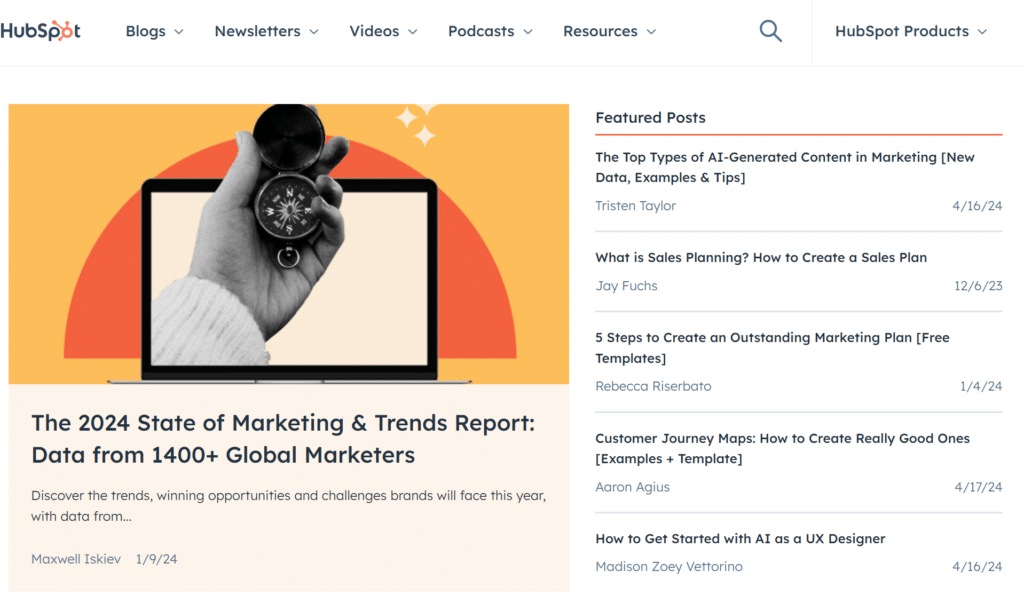
Keep in mind that useful content should not feel like an ad. Instead of over-promoting your solutions, take a genuine approach to helping your customers inspire organic interest in your offerings.
#2. Take Advantage of Personalization
Personalization involves customizing interactions and offerings based on individual customer data and preferences. Personalization enhances the customer experience and builds stronger emotional connections by addressing specific needs and preferences.
Personalization is important for customer engagement because it:
- Makes customers feel seen and understood.
- Increases the likelihood of conversion and repeat purchases.
- Fosters a deeper emotional connection with the brand.
An increased focus on personalization can also be linked to higher returns on investment (ROI).
Use data to understand customer behavior and preferences, personalize emails and product recommendations, and continuously update and refine personalization strategies for effective personalization.
If your organization prioritizes personalization, you might also be interested in our guide on performing personalization at scale.
#3. Set up a Customer Loyalty Program
A customer loyalty program rewards customers for their repeat business and engagement. By providing incentives, loyalty programs encourage repeat purchases and long-term loyalty.
Loyalty programs are important for customer engagement because:
- They reward customers for repeat purchases, building a habit of choosing your brand over competitors.
- They create a sense of appreciation and exclusivity, making customers feel valued and more likely to advocate for the brand.
To create a successful loyalty program, make rewards attainable and desirable, clearly communicate the program's benefits, and regularly update it to keep it exciting. This can be done through gamification, which integrates game-like elements such as points, badges, or rewards to incentivize and engage customers in repeat purchases and brand interaction.
Another common route in B2B is to incentivize users to join loyalty programs by offering exclusive access to certain features. For example, the Salesforce Partner Program provides members with access to the Einstein 1 Platform, which offers exclusive tools and resources to grow their business.
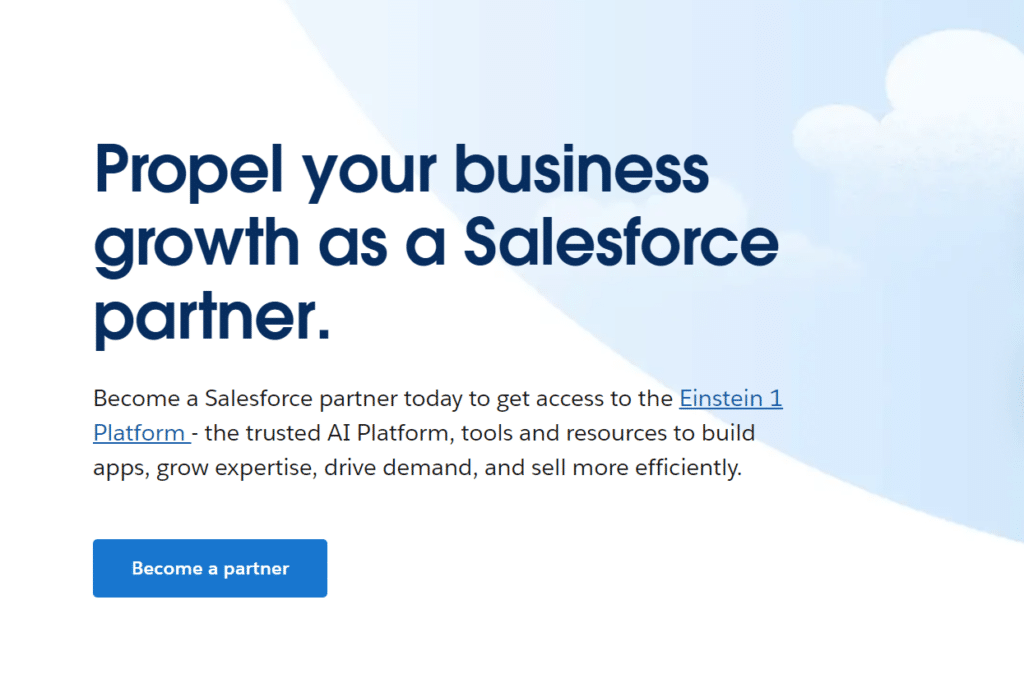
#4. Use Social Media to Meet Your Prospects in their Comfort Zone
Engaging with customers on social media platforms where they spend their time is crucial for building brand visibility and accessibility. WPromote's 2023 State of B2B Digital Marketing report reveals that social media ranks as the most effective channel for achieving both top-of-funnel and bottom-of-funnel goals.
Using social media to engage customers is effective because it:
- Increases brand visibility and accessibility.
- Allows for real-time interactions and feedback.
- Builds a community around your brand.
Shopify is a great example of using social media to deliver useful content and keeping users engaged. The popular ecommerce tool built a strong following on YouTube by producing helpful "How-To" guides, covering a wide range of topics to support their target audience's needs.
To succeed, be active and responsive on key social media platforms, share a mix of promotional and engaging content, and analyze social media metrics to refine strategies.
This is best done using marketing automation tools, and you want to be sure you invest in the best tool for your goals. To learn more, read our guide on how to choose the right marketing automation tool.
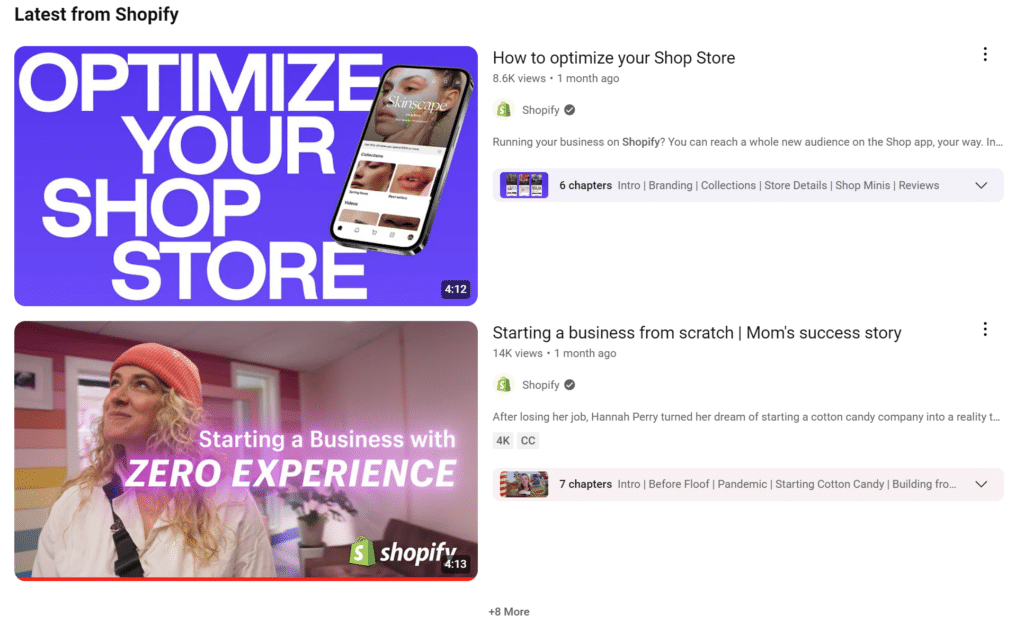
#5. Practice Active Listening When Resolving Issues
Active listening involves listening to customer complaints and feedback to resolve issues. As we mentioned before, listening to and applying customer feedback is crucial for maintaining customer satisfaction and engagement.
Active listening creates and supports an engaged customer base because:
- It builds trust and shows that you value customer input.
- Helps identify and address recurring problems.
- Improves your ability to refine product and service offerings.
Train support teams in active listening techniques, respond promptly and empathetically to customer issues, and follow up to ensure resolution and satisfaction. Active listening turns negative experiences into positive outcomes, strengthening customer relationships.
#6. Develop a Strong Brand Voice
The more memorable your brand voice, the more likely you are to stand out from competitors and live within customers' minds. To increase customer engagement, it's important to develop a unique brand voice that communicates your brand values and mission and resonates with your target audience.
A strong brand voice increases customer engagement because it:
- Improves connection by creating a personality for your brand.
- Enhances customer trust and loyalty.
To define your brand voice, start by analyzing how your customers communicate. This can be done by using social listening tools to monitor online conversations. Develop a voice that aligns with the values your customers share, and adapt your voice to suit different platforms while maintaining a consistent tone.
For example, Spotify's quirky, casual brand voice is consistent across its platform, ads, emails, and social media. This supports a cohesive brand image and persona, maintaining customer engagement by feeling more personable.

#7. Regularly Collect and Address Feedback
If you're wondering how to maintain customer engagement, why not go straight to the source? Your customers are a fantastic resource, and regularly gathering feedback provides a plethora of benefits for marketing, product improvements, and customer service.
Customer feedback is important for customer engagement because it:
- Shows customers that their opinions matter.
- Enhances the customer experience by listening to and addressing needs.
- Helps identify areas for improvement.
Use surveys, reviews, and feedback forms to gather insights and analyze feedback. Then, identify common themes and issues and implement changes while communicating improvements to customers.
Regular feedback collection and action demonstrate a commitment to customer satisfaction and continuous improvement. For instance, AirBnB regularly collects and addresses feedback to enhance the user experience and improve their platform.
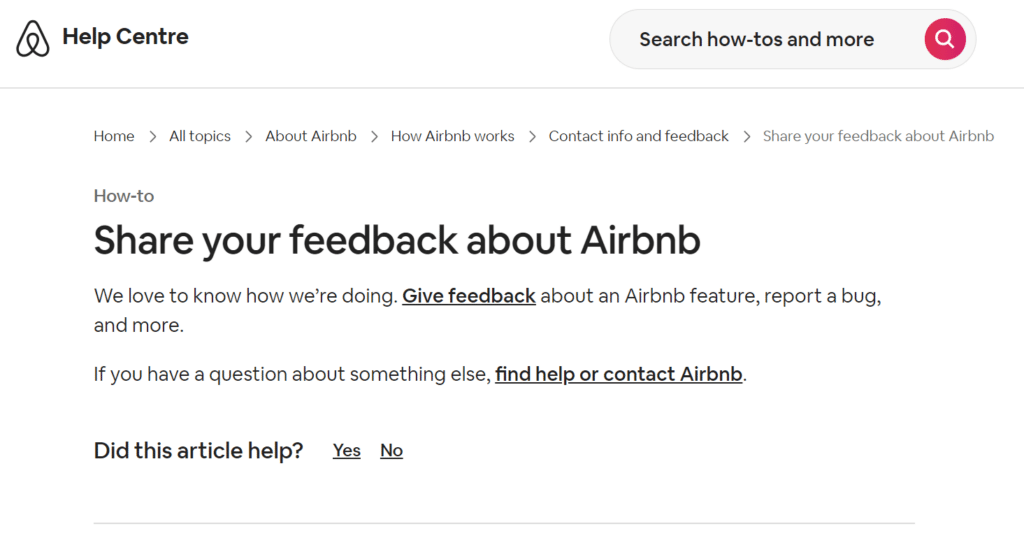
#8. Set up a Customer Success Center
A strong customer experience is central to a successful customer engagement strategy. This starts by setting customers up for success.
A customer success center includes resources that answer customer questions and support their goals when using your products or services.
By providing customers with a success center, you can:
- Proactively address customer needs and challenges.
- Streamline customer support and reduce support queries.
- Help customers get the most value from your offerings.
Offer resources such as tutorials, FAQs, and support articles while maintaining easy access to customer support representatives. For example, Salesforce’s Customer Success Center includes extensive resources and personalized support to help its users succeed.
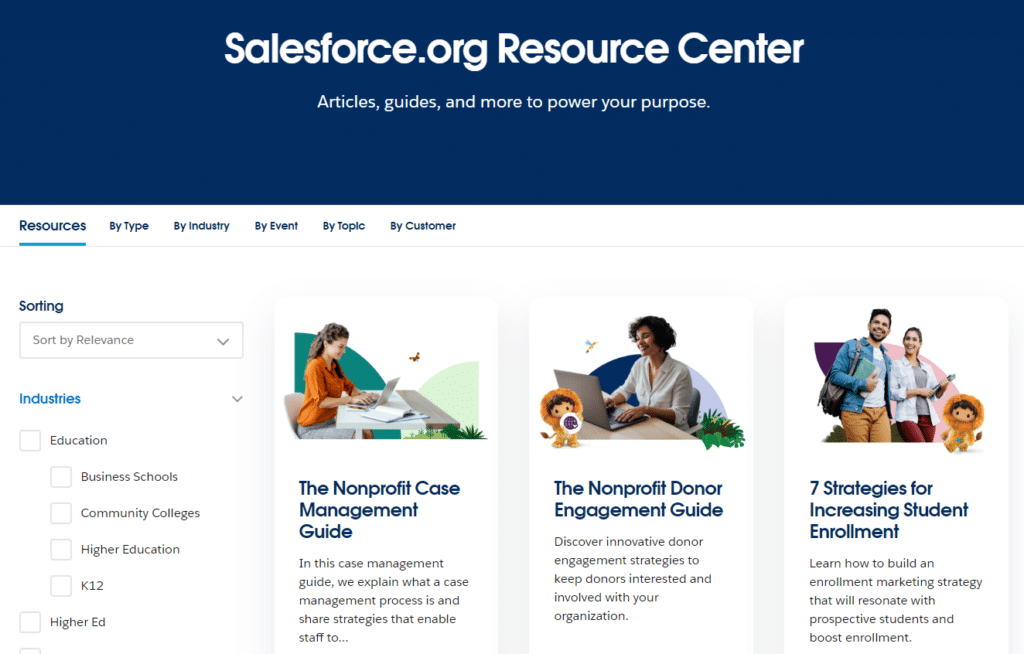
#9. Develop and Share Your Company’s Vision and Mission Statement
Being clear on your company's mission and vision allows you to build a deeper connection with customers. Customers who align with your organization's goals are likelier to exhibit brand loyalty and remain engaged.
Sharing your brand mission and vision is important for customer engagement because it:
- Differentiates your brand in a competitive market.
- Connects human values to business practices.
- Establishes deeper customer connections and relationships.
Create clear, concise, and inspiring vision and mission statements, share them prominently on your website and in marketing materials, and ensure all employees understand and embody them.
For example, Patagonia stands out as a brand due to its commitment to a specific mission and vision. Its focus on sustainability resonates with its target audience of outdoor enthusiasts and has helped the brand differentiate itself in its market.
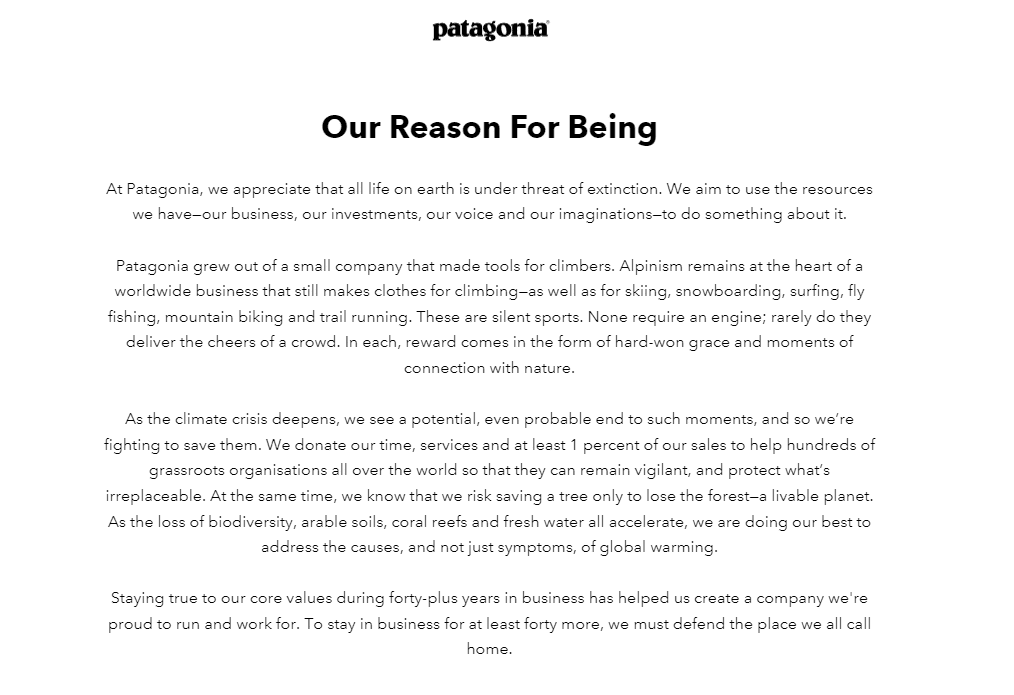
#10. Use Video to Improve the Onboarding Process
Video marketing has exploded in recent years, largely fuelled by the rise of short-form video apps like TikTok, Instagram Reels, and YouTube Shorts. Beyond marketing, video is also increasingly used for customer onboarding to make an otherwise boring process more interesting.
When onboarding new customers, video is useful because it:
- Simplifies complex information and enhances understanding.
- Engages customers more effectively than text alone.
- Provides a personal touch to the onboarding experience.
Create clear, concise, and visually appealing onboarding videos. Address common questions and challenges in the videos and make them easily accessible on your website and through follow-up emails. Consider using a tool like Loom to capture video walk-throughs of products or programs or integrate video clips into a customer support center.
Notion is a popular productivity tool with effective user onboarding videos. The Notion Academy has step-by-step videos that break down complex features and help new users find their way around the popular workspace platform.
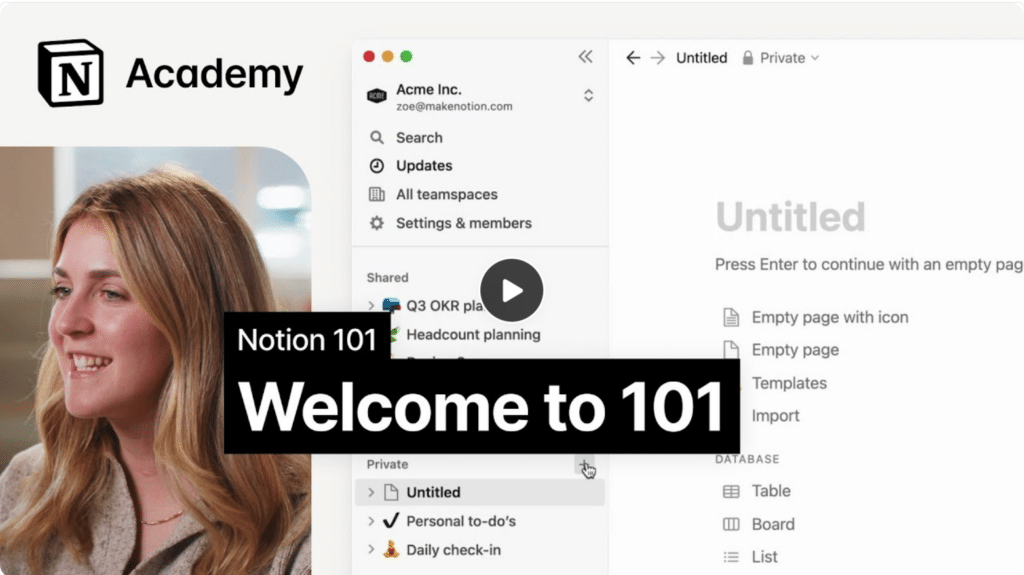
#11. Analyze and Understand the Customer Journey
Understanding your customer journey is crucial for your customer engagement strategy and every marketing and sales strategy you create. Pain points that arise as customers move from awareness to decision tell you a lot about how you can help them and how you can keep them engaged.
Analyzing the customer journey helps your business:
- Get to know customers on a deeper level.
- Deliver more impactful personalization.
- Create content that speaks to customer needs.
To get inside the minds of your customers, it's important to conduct periodic surveys and make it easy for customers to leave reviews and feedback. Industry benchmarks and competitor case studies are also fantastic resources for better understanding your target audience.
We also suggest reading our guide on marketing funnel optimization, which examines how to match your marketing approach to each stage of the funnel.
#12. Optimize Your Website for Mobile
Let's be honest: we're inseparable from our phones these days. In fact, 92% of B2B decision-makers own a smartphone for business purposes, and 77% use it to research products or services.
A mobile-optimized website is now necessary to compete in the modern business market.
Optimizing for mobile works because it:
- Accommodates the growing number of mobile users.
- Enhances user experience and reduces bounce rates.
- Improves brand visibility through search engine rankings.
Use responsive design to adapt to different screen sizes, optimize loading times, ensure easy navigation, and test your website on various devices to ensure compatibility. A mobile-optimized website ensures a positive experience for all users, increasing engagement and conversions.
#13. Use the Right Customer Engagement Tools
Customer engagement tools are your best bet for ensuring seamless execution of your engagement strategy. The right tools provide insights and analytics to refine strategies and enhance the overall customer experience.
Using the right tools supports your team by:
- Automating repetitive tasks and improving efficiency.
- Providing insights and analytics to refine strategies.
- Enhancing the overall customer experience.
Choose tools that align with your engagement goals, integrate tools to ensure seamless data flow and functionality, and regularly evaluate and update your toolset to keep up with changing needs.
Not sure where to start when it comes to customer engagement tools? Check out our round-up and review of the best marketing software.
14 Customer Engagement Metrics to Measure the Success of Your Strategies
As we mentioned before, it's important to experiment with different engagement strategies and refine your approach over time. In order to do that, outline specific metrics to track within your strategy.
The metrics that best reflect the success of your strategy will vary based on your goals. Common metrics used to track customer engagement include:
- Customer Acquisition Rate: Measures the rate at which new customers are acquired, indicating the effectiveness of marketing and sales efforts.
- Customer Retention Rate: Indicates the percentage of customers who continue to do business with the company over a given period, reflecting satisfaction and loyalty.
- Customer Lifetime Value (CLTV): Estimates the total revenue a business can expect from a single customer account throughout the business relationship, helping to understand the long-term value of client engagement.
- Net Promoter Score (NPS): Assesses customer satisfaction and loyalty by asking customers how likely they are to recommend the company to others. High NPS suggests strong customer engagement.
- Customer Satisfaction Score (CSAT): Measures how satisfied customers are with a company's products, services, or interactions, usually through surveys after interactions or purchases.
- Churn Rate: Tracks the percentage of customers who stop doing business with the company during a specific period. A low churn rate is an indicator of good customer engagement.
- Average Order Value (AOV): Calculates the average amount spent each time a customer places an order, reflecting purchasing behavior and engagement level.
- Repeat Purchase Rate: Measures the percentage of customers who make more than one purchase, indicating loyalty and ongoing engagement.
- Engagement with Sales and Marketing Content: Includes metrics such as email open rates, click-through rates, content downloads, and social media interactions, showing how actively customers engage with marketing efforts.
- Website Traffic and Behavior: Monitors metrics like page views, time spent on site, bounce rate, and conversion rates to understand how customers interact with the company's website.
- Interaction Frequency: Tracks how often customers interact with the sales team, customer support, or engage with the company's communication channels.
- Social Media Engagement: Measures likes, shares, comments, and other interactions on social media platforms, reflecting customer interest and engagement with the brand.
- Product Usage Metrics: For businesses offering software or online services, tracking how often and how extensively customers use the product can indicate engagement levels.
- Referral Rate: Measures how often current customers refer new customers to the business, indicating strong engagement and satisfaction.
By monitoring these metrics, you can gain valuable insights into engagement levels and make data-driven decisions to enhance your efforts. Remember to review and adjust your approach over time to maintain strong customer relationships and drive long-term success.
Engagement Starts With Listening!
Successful customer engagement begins with truly understanding and valuing your customers. You can drive long-term loyalty and satisfaction by implementing diverse strategies, such as sharing useful content, personalizing experiences, and establishing loyalty programs.
Remember, experimentation and iteration are key.
Monitor key metrics such as retention rates, NPS, and engagement rates to fine-tune your approach and ensure your efforts resonate. If engagement takes a dive, don't panic. Start by listening to your customers and responding to their needs, and you'll soon be back on track with business growth.
Join For More Customer Insights
Looking for more help with building an experience your customers love? Subscribe to The CMO Club newsletter to stay updated with the latest customer insights and marketing trends.




